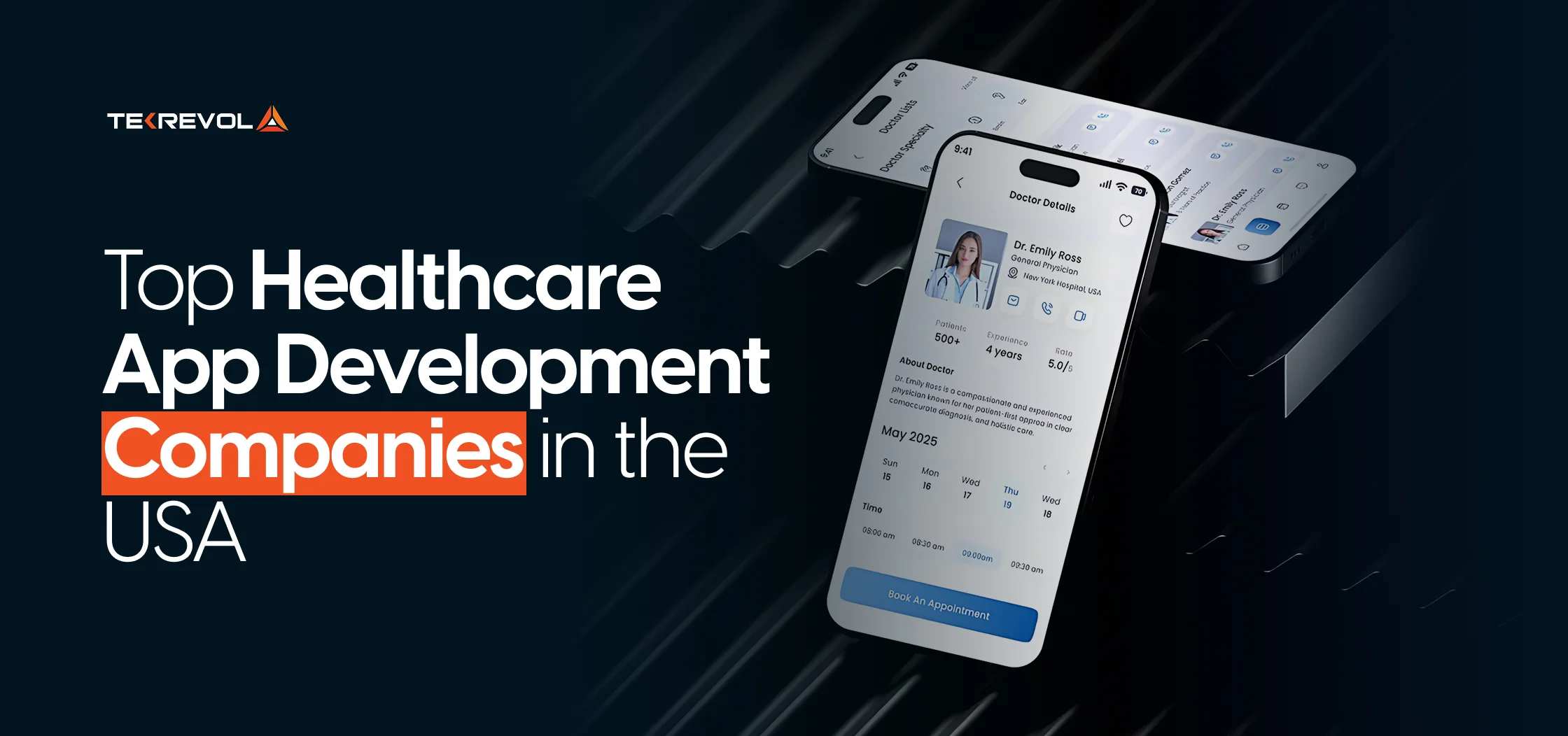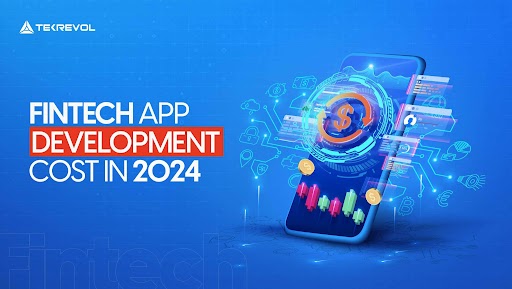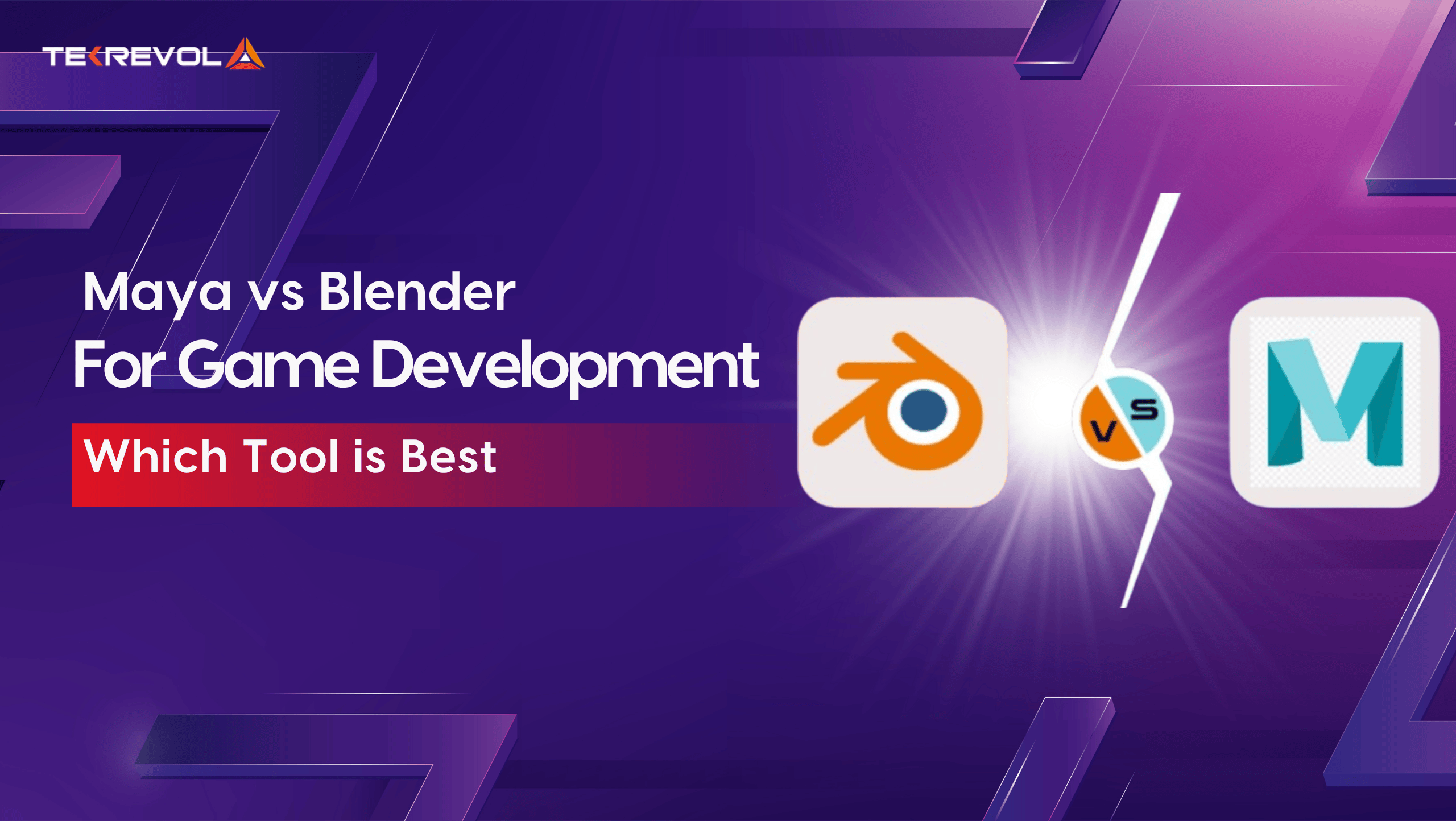Ever scroll through your phone, glance at Yoga Go, and wonder, “How much does it cost to create an app like Yoga Go”? You’re not alone. With millions of people turning to mobile fitness apps for convenience, flexibility, and guided workouts, developing a yoga app has never been more promising.
The size of the global fitness app market is expected to reach $23.21 billion in 2030 with a CAGR of 13.9%. But before diving in, understanding the cost to develop app like Yoga Go is crucial. A basic yoga app will cost between $20,000 – $40,000.
From subscription management to interactive video sessions and personalized routines, every feature affects your investment. By examining Yoga Go reviews and its functionality, you can plan a fitness app that stands out in the crowded wellness app market.
If you’ve been looking at the development of an app like Yoga Go, this guide explains all, from the cost to develop app like Yoga Go to essential features, and whether it’s a smart investment in 2025.
What Is the Yoga-Go App? Detailed Overview of the Features & Functionality
Yoga-Go is a wellness app offering a variety of yoga and Pilates workouts customized to users’ needs. It includes programs for beginners, targeted weight loss, and specialized sessions like chair yoga.
Do you know that over 300 million people practice yoga globally, and a growing number of them are turning to mobile apps for convenience and flexibility.
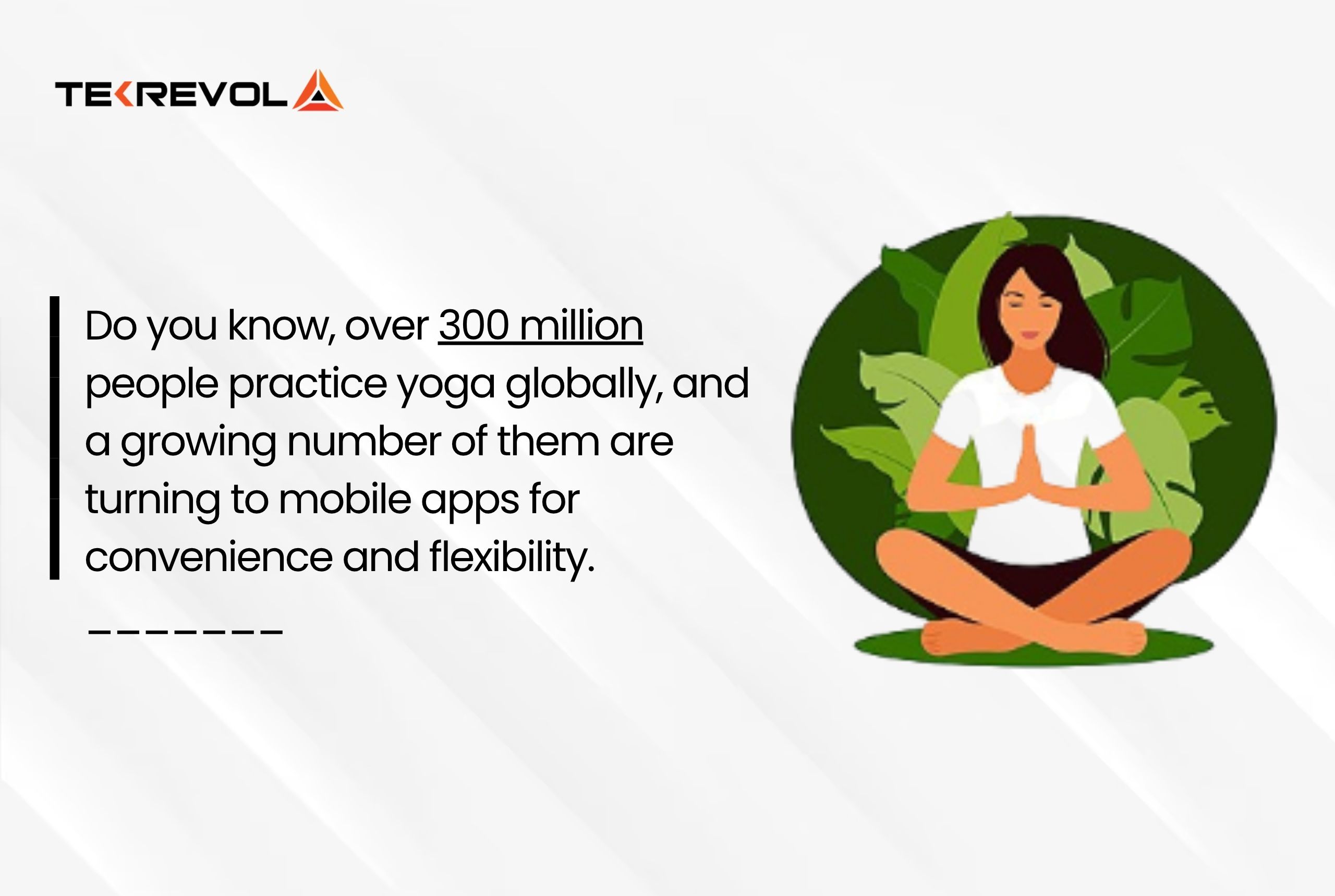
By studying Yoga Go subscription cost and user feedback, you can identify must-have features to create an app like Yoga-Go.
| Feature | What it Does | Why It Matters |
| Personalized Plans | Custom routines based on your age, gender, experience, and available time | Ensures each session aligns precisely with your goals and schedule |
| Progress Tracker | Log workouts, calories, sessions, with visual progress charts | Keeps you motivated and accountable by making improvements visible |
| 7- 30 minute sessions | Short and long sessions to fit any schedule | Makes it easy to stay consistent, even on busy days |
| Diverse Yoga Library | Includes Hatha, Vinyasa, Yin, Power Yoga, and more | Offers flexibility and variety—almost like having multiple instructors |
| On-demand Videos | Expert-led tutorials available anytime, updated regularly | Provides professional guidance and keeps content fresh |
| Health App Integration | Syncs with Apple Health, Google Fit, and Fitbit | Unifies your health data for comprehensive tracking |
| Offline mode | Download sessions to use without an internet connection | Enables uninterrupted practice, even when you’re off the grid |
| Nutrition Guidance | Meal plans and healthy recipes to complement your yoga routine | Promotes holistic wellness—balancing body, mind, and diet |
Whether you’re aiming for a freemium model or a premium subscription, knowing these core features helps estimate the cost to develop an app like Yoga Go accurately.
How Much Does Yoga-Go Cost in 2025? Here’s a Full Breakdown
If you’re considering downloading Yoga-Go to start your wellness journey, one of the first questions you probably have is: Is Yoga-Go free or paid? Let’s break it down.
Yoga-Go Subscription Cost
Understanding how much is the Yoga Go app cost and what users get helps aspirants plan their own versions. Yoga-Go provides a free trial for new users, providing you with temporary access to core features and some of the workouts.
Moreover, Yoga-Go operates on a subscription-based system with different pricing tiers for different levels of commitment. Here’s what you can look forward to:
| Plans | Pricing |
| 1-Year Intro Subscription (30 Days) | $14.99 |
| Full Year Subscription (12 Months) | $52.99 |
| Quarterly Premium Plan | $34.99 |
| Monthly Premium Plan | $19.99 |
| One-Time Guides | $29.99 |
| Monthly Weight Loss Plan | $9.99 |
Disclaimer: The pricing listed here is based on publicly available data and from Yoga Go reviews from users. We are not affiliated with the app itself. If you’re developing your own app, be sure to consult with a mobile app development company to get accurate estimates for your specific project.
What Type of Yoga App Should You Create? Check Out These Options and Their Prices
When considering how to develop an app like Yoga Go, it’s essential to understand the various types of yoga apps available and their associated costs. Each type caters to different user needs and offers unique features that can influence your development strategy and budget.
| App Types | Key Features | Examples | Estimated Cost |
| On-Demand Yoga Classes | Live or recorded video sessions, class booking, and subscriptions | Glo, Alo Moves, Yoga International | $50,000 – $120,000 |
| AI-Based Yoga Feedback Apps | Posture correction, computer vision, performance-based personalization | Yoga-Go, Asana Rebel | $80,000 – $150,000 |
| Meditation & Mindfulness Apps | Guided meditations, breathwork, and relaxation techniques | Calm, Headspace | $40,000 – $100,000 |
| Yoga + Fitness Hybrid Platforms | Yoga + HIIT, meal plans, fitness tracking, community support | FitOn, Daily Yoga | $60,000 – $130,000 |
- Want to create your own fitness app like Yoga Go?
- Dive into our expert guide to learn how to get started the right way.
What Impacts the Cost to Develop App Like Yoga Go in 2025?
The cost to develop app like Yoga Go depends on several key factors, including features, target platforms (iOS, Android, or both), UI/UX design complexity, and the type of development team (freelancers, in-house, or outsourcing company).
The global fitness app market is projected to reach $55.86 billion by 2028, making it a lucrative space for innovative apps. If you plan to create app like Yoga Go, it’s crucial to understand the main cost drivers:

1. Yoga App Features & Functionalities
Feature complexity has the biggest impact on yoga app development cost. Advanced functionality requires more development time and budget.
| Feature Set | Features Included | Estimated Cost |
| Basic / MVP Version | – User registration & profiles
– Pre-recorded yoga sessions – Basic workout tracking – Push notifications – Payment integration |
$20,000 – $40,000 |
| Advanced Functionality | – AI-based posture correction
– Live-streaming & interactive classes – Personalized workout plans – Wearable integration – AI chatbot or virtual coach |
$50,000 – $150,000 |
Note: Pro tip: Starting with an MVP lets you test the market without overspending. For a competitive edge and top-tier Yoga Go app features, be ready for a higher investment.
2. Platform Choice
Your choice of platform can significantly impact the overall budget:
| Platform | Estimated Cost |
| iOS (native) | $30,000 – $100,000 |
| Android (native) | $30,000 – $100,000 |
| Cross-platform (Flutter/React Native) | $40,000 – $120,000 |
Note: Cross-platform solutions reduce costs while reaching both iOS and Android users. Partnering with a trusted mobile app development services provider ensures quality without compromise.
3. UI/UX Design
User experience is most important in health and fitness apps. Design prices can differ depending on complexity:
- Basic Design: Minimal layouts, necessary elements will cost you around $3,000 to $8,000
- Advanced Design: Unique animations, engaging UI will cost you around $10,000 to $25,000
Example: A clean interface with a “Start Today’s Session” button at the top, followed by swipeable workout cards and a circular progress tracker, enhances focus and ease of use.
4. Development Team & Location
Developer rates differ remarkably worldwide. Here’s a brief comparison:
| Region | Hourly Rate USD |
| North America | $100 – $200/hr |
| Western Europe | $80 – $150/hr |
| Eastern Europe | $40 – $80/hr |
| South Asia (India, etc.) | $20 – $50/hr |
Note: Outsourcing your Yoga Go app development project to a reputable agency can cut costs by up to 60% while ensuring high-quality results.
5. Backend & Cloud Infrastructure
Robust backend platforms drive real-time functionality, video hosting, and user management.
| Backend Component | Estimated Annual Cost |
| Basic Cloud Hosting | $5,000 – $15,000 |
| Advanced Infrastructure (AI, streaming, scalability) | $20,000 – $50,000 |
However, businesses can use AWS, Firebase, and Azure to drive yoga apps with flexibility and security. Selecting serverless architectures can also save money and make scaling easy.
6. App Maintenance & Updates
To keep users happy and your app running smoothly, ongoing maintenance is a must. Here’s what you can expect in terms of annual maintenance costs:
| App Type | Estimated Maintenance |
| Basic yoga app | $5,000 – $15,000 |
| An app with frequent updates/features | $15,000 – $50,000 |
Pro tip: Allocate a minimum of 15–20% of your initial development budget for annual maintenance and updates. It’s a good way to future-proof your investment and also save yourself from some nasty surprises.
If you want to keep things easy and cost-effective, consider hiring a reliable mobile app maintenance and support service provider that can handle everything from bug patches to feature releases.
- Need yoga app development support?
- We’ll help you launch your MVP fast with all the right features.
Average Cost to Develop App Like Yoga Go in 2025
The average cost to develop app like Yoga Go in 2025 can vary between $10,000 and $100,000+, depending on complexity and features.
Let’s walk through some realistic cost ranges based on the complexity and feature sets of different yoga app models.
| App Type | Basic | Mid-level | Advanced | Enterprise-level |
| Yoga App (Basic) | $20,000 – $40,000 | $50,000 – $80,000 | $100,000+ | $150,000 – $200,000+ |
| AI-Powered Yoga App | $50,000 – $80,000 | $100,000 – $150,000 | $150,000+ | $200,000 – $300,000+ |
| Hybrid Fitness & Yoga App | $40,000 – $70,000 | $80,000 – $130,000 | $150,000+ | $200,000 – $250,000+ |
Please note: Prices quoted are approximate and subject to variations according to customization, platform requirements, design complexity, and development partner.
How to Minimize Expenses in Yoga App Development Cost?
Thinking of developing your own yoga app, but worried about the expense? Let money issues not hold you back. With smart planning, it is possible to minimize the cost to develop app like Yoga Go without going broke in the process. This is how:
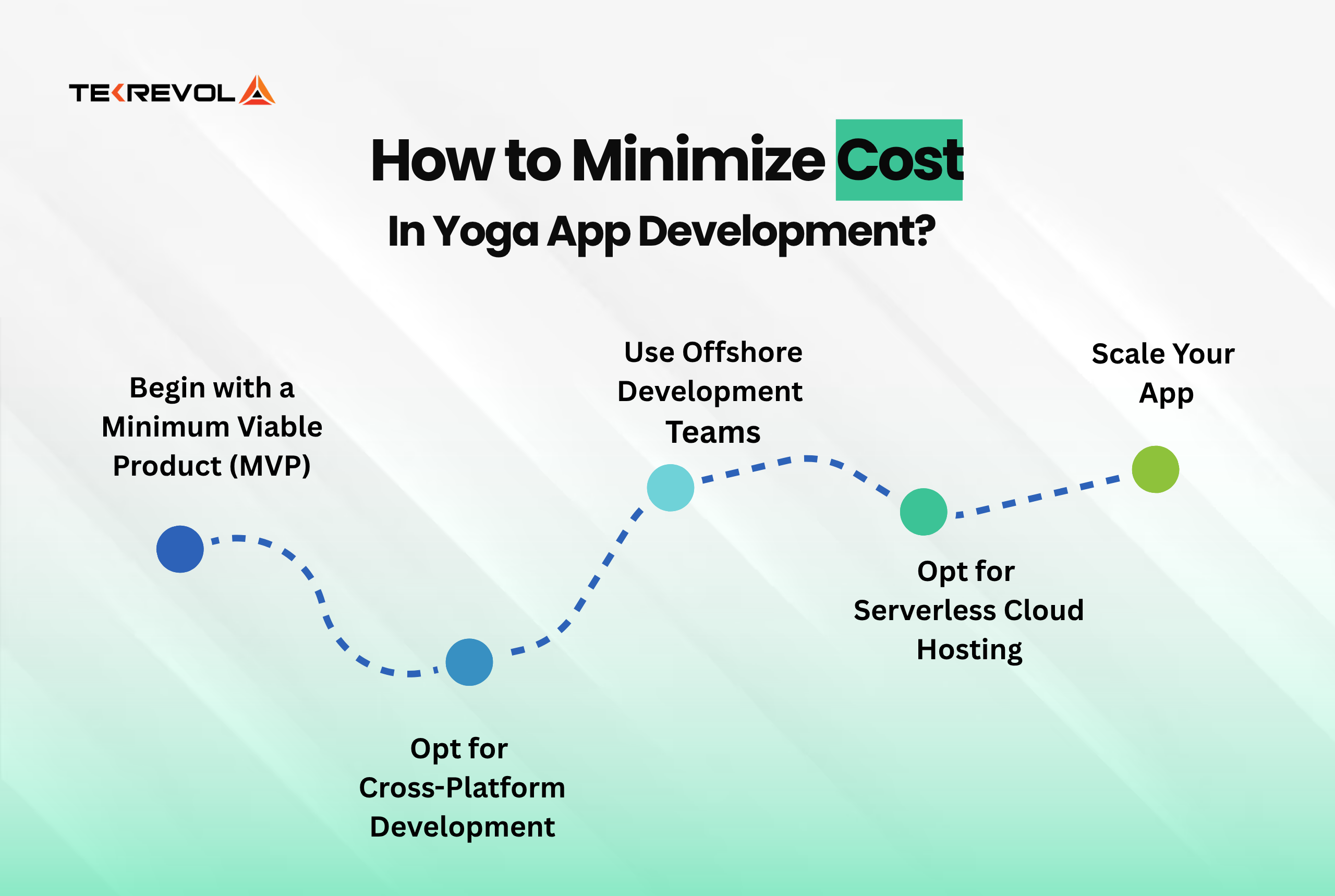
1. Begin with a Minimum Viable Product (MVP)
Instead of a first release that contains all-the-features-rolled-into-one, build a down-to-the-bone version that contains just the essentials like user registration for the app, a recorded workout, and tracked exercise.
2. Opt for Cross-Platform Development
Both native iOS and Android apps may double the task list and the budget. Leverage frameworks like Flutter or React Native to write a single codebase that runs natively on both platforms. About 30-40% of development time and cost can be saved while maintaining a satisfactory user experience.
3. Use Offshore Development Teams
Employing developers in places such as Eastern Europe or South Asia can bring your costs down by 50% or more, without compromising on quality, provided you hire the services of a reputable agency that provides tested expertise in fitness or wellness apps.
4. Opt for Serverless Cloud Hosting
Migrating to serverless architecture (such as AWS Lambda or Firebase) reduces the work of having to manually maintain servers. Not only does this reduce hosting and infrastructure expenses, but it also means you can scale more efficiently.
5. Scale Your App
Plan your app architecture to be scalable for the future. That way, you can simply bolt on capabilities such as AI, live streaming, or health tracker integration later, without having to reimagine your backend entirely.
How TekRevol Optimizes the Cost to Develop App Like Yoga Go?
If you’re planning to create app like Yoga Go, TekRevol transforms your concept into a full-fledged digital solution. We specialize in building user-centered mobile applications that are visually appealing, intuitive, and designed to drive engagement, retention, and in-app purchases.
Whether you’re launching a simple MVP or envisioning an advanced Yoga Go app with AI posture correction, live streaming classes, wearable integration, and personalized workout plans, our team can deliver it efficiently while optimizing costs.
By leveraging agile development, reusable components, and strategic feature prioritization, TekRevol ensures your cost to develop app like Yoga Go stays transparent and manageable without compromising quality. From ideation and UI/UX design to development, testing, and post-launch support, we provide end-to-end services tailored to the fitness and wellness industry.
- Ready to launch your yoga app?
- Our experts handle every step to keep the cost to develop app like Yoga Go optimized


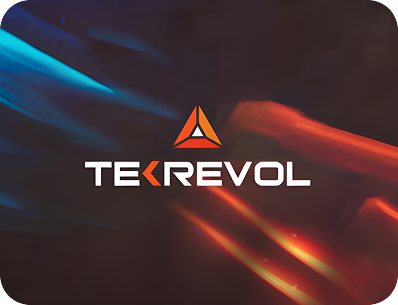
![Web3 Development Cost For Games Like Axie Infinity [Detailed Guide]](https://d3r5yd0374231.cloudfront.net/images-tek/uploads/2025/10/web3-2.webp)
